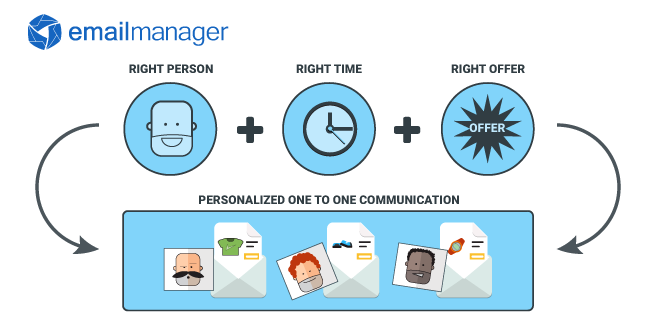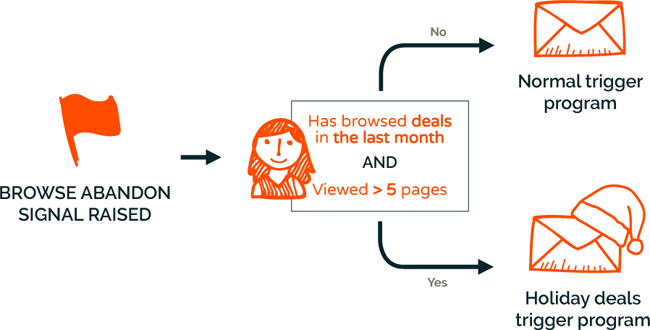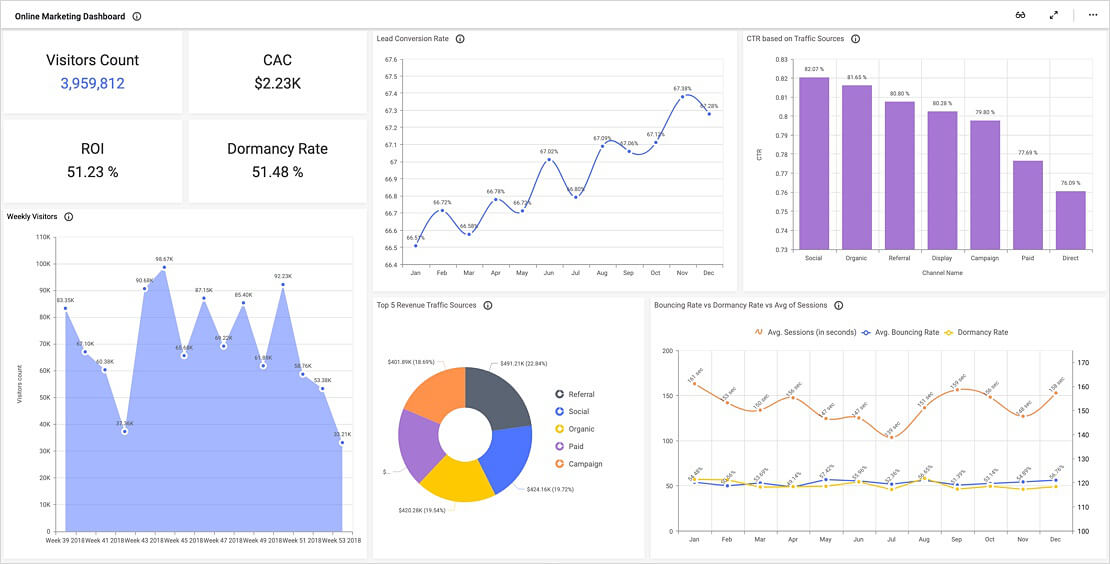
In the realm of email marketing, personalization is the key to capturing your audience’s attention and boosting conversion rates. Advanced segmentation techniques play a pivotal role in achieving this. This article delves into the significance of advanced segmentation and its profound impact on enhancing email campaign conversions. Imagine your email campaigns as a delightful box of donuts – each subscriber receives a customized treat that perfectly matches their preferences. Just like selecting their favorite donut flavor, the way you segment your audience adds a unique touch to your emails, making them more enticing and irresistible. So, let’s dive into the world of advanced segmentation and discover how you can sweeten your email campaigns with personalized donut-inspired flair!
We will explore the various aspects of advanced segmentation, from data-driven strategies to practical tips for segmenting your email list effectively. Discover how these techniques can elevate your email marketing game and drive higher conversions.
The Significance of Advanced Segmentation
Defining advanced segmentation in email marketing
Advanced segmentation in email marketing is the practice of categorizing your subscriber list into highly specific groups based on various data points, such as demographics, behavior, purchase history, and engagement levels.
Unlike basic segmentation, advanced segmentation delves deeper into understanding your subscribers, allowing for more targeted and personalized email campaigns. By adopting a growth mindset, marketers can continually improve their advanced segmentation strategies, staying adaptable and innovative in the way they engage with their subscriber lists.
How personalized email campaigns contribute to higher conversions
Personalized email campaigns are a potent tool for boosting conversion rates. When you send tailored content and offers to specific segments of your audience, you’re more likely to resonate with their needs and interests.
This relevance increases engagement, trust, and ultimately, conversions. The more personalized your emails, the better the chances of recipients taking desired actions, such as making a purchase, scheduling an appointment or signing up for a webinar.
The role of data-driven insights in segmentation
Data-driven insights are the foundation of advanced segmentation. By analyzing subscriber data, you can uncover patterns, preferences, and behaviors. By delving into subscriber data, you can detect patterns and preferences, like the need for efficient financial tools which may highlight integrations such as PayPal QuickBooks as a key segment interest.
This information empowers you to create highly targeted segments, ensuring that your emails are not only relevant but also timely.
Utilizing data-driven insights, you can identify the right moment to send an email, the most appealing content, and the ideal product recommendations, all of which enhance the chances of achieving higher conversions. Advanced segmentation, driven by data, is a powerful way to unlock the full potential of your crypto marketing efforts.
Data Collection and Quality
Collecting and maintaining clean and relevant data
Effective segmentation begins with the collection of clean and relevant data. Ensure that your data collection methods are accurate and up-to-date. Regularly clean your email lists to remove inactive or irrelevant subscribers. Accurate data is the foundation of successful advanced segmentation, as it enables you to precisely categorize your audience and create personalized email campaigns that resonate with their interests.
Identifying sources of data for segmentation
To implement advanced segmentation techniques, it’s crucial to identify diverse sources of data. These may include subscriber profiles, purchase history, website interactions, and more. Integrating data from various touchpoints helps you gain a holistic view of your subscribers, making it easier to create finely tuned segments that cater to their specific needs and behaviors.
Data privacy and compliance considerations
Respecting data privacy and complying with regulations like GDPR and CAN-SPAM is paramount. Inform subscribers about data usage, obtain consent, provide options for unsubscribing, and take part in social engineering training When collecting and storing data, ensure it’s secure and encrypted. “Adhering to data privacy guidelines not only builds trust with your audience but also safeguards your brand from legal issues,” notes Keran Smith, Co-Founder of LYFE Marketing.
Advanced Segmentation Variables
Demographic segmentation
Demographic segmentation involves dividing your email list based on tangible attributes like age, gender, location, and more. By understanding the characteristics of your subscribers, you can tailor your email content to better suit their needs. For instance, a clothing retailer might send different promotions to male and female customers, recognizing their distinct preferences.
Streaming services like Netflix employ demographic data to suggest content suited to your age and location.
Behavioral segmentation
Behavioral segmentation relies on the actions your subscribers take, such as their purchase history, website interactions, email engagement, and more. It’s about understanding what they do rather than who they are. An e-commerce business can segment its audience based on past purchases, sending product recommendations or special offers that align with customers’ shopping history.
In the real world, companies use a combination of these variables for advanced segmentation. Amazon, for instance, analyzes both purchase history (behavioral) and browsing history (also behavioral) to recommend products.
Psychographic segmentation
Psychographic segmentation delves into the psychology and lifestyle of your subscribers. It considers their interests, values, attitudes, and preferences. This type of segmentation helps you create content and offers that resonate with their emotional and personal needs. For example, a travel agency might segment customers based on their love for adventure, festivals, luxury, or family-friendly vacations, tailoring their emails accordingly.
Creating Buyer Personas

Source: Vital design
Defining and crafting detailed buyer personas
Buyer personas are semi-fictional representations of your ideal customers, encompassing their demographics, behaviors, and preferences. Crafting detailed personas involves market research, surveys, and customer analysis.
Understand their pain points, goals, and motivations. Are they budget-conscious or looking for luxury? Do they prefer video content over written articles? By answering such questions, you create rich, character-driven personas that guide your email campaigns.
Utilizing personas for precise segmentation
Buyer personas are the linchpin of advanced segmentation. Once your personas are defined, you can segment your email list based on the characteristics that align with each persona. For instance, if you offer both budget and luxury products, segment your list accordingly. This ensures that recipients receive content and offers tailored to their persona, increasing the chances of engagement and conversions.
Mapping content and offers to personas
With personas in hand, use the AI email generator to map your email content and offers to specific needs and preferences. Tailor subject lines, messaging, and product recommendations to resonate with each persona. If you have a persona who loves eco-friendly products, send them emails showcasing your sustainable offerings.
By aligning content and offers with personas, you create a highly personalized experience that drives higher conversions and fosters customer loyalty. Advanced segmentation, driven by detailed buyer personas, is the cornerstone of successful email marketing in today’s personalized landscape.
Segmenting Based on Customer Lifecycle
Segmenting your email list based on the customer lifecycle is a powerful strategy. It involves categorizing subscribers into distinct stages, such as new leads, loyal customers, and inactive users.
New leads require nurturing and introduction, loyal customers appreciate special rewards, and inactive users need re-engagement efforts. By recognizing where each subscriber falls in their journey, you can send more relevant and timely content.
Tailoring content and messages to each lifecycle stage
Once you’ve differentiated the segments, it’s crucial to tailor your content and messages accordingly. New leads might benefit from informative content and welcome emails, while loyal customers could receive exclusive offers or loyalty program updates.
For inactive users, rekindle their interest with re-engagement emails featuring incentives or reminders of what they’re missing. This approach ensures that each segment receives emails that align with their current relationship with your brand.
Examples of email campaigns include onboarding sequences for new leads, personalized product recommendations for active users, loyalty rewards emails, and win-back campaigns for inactive users.
These campaigns leverage advanced segmentation to cater to the specific needs and interests of each customer segment, ultimately leading to higher conversions and increased customer satisfaction.
Dynamic Content and Personalization Tokens

Source: PepperContent
Implementing dynamic content based on segmentation variables
Dynamic content is a game-changer in email marketing, allowing you to tailor your message to each recipient. By leveraging segmentation variables like location, past purchases, or browsing history, you can dynamically change elements within your email, such as images, text, or calls to action. For example, a travel agency can show different destination images and offers based on a subscriber’s previous travel choices, enhancing engagement and conversions.
Using personalization tokens for individualized messages
Personalization tokens are like magic words in email campaigns. They enable you to address recipients by their names, insert personalized product recommendations, or reference recent interactions. Using a subscriber’s first name in the email subject or body creates a sense of individualized communication, making recipients feel valued and more likely to engage with your content.
Effective personalization examples in email campaigns
Effective personalization goes beyond using a recipient’s name. It involves suggesting products related to their previous purchases, referencing their abandoned shopping cart items, or sending personalized event invitations based on their interests.
For instance, an e-commerce store can send an email with “Recommended for You” products, demonstrating that they understand the customer’s preferences. These advanced techniques in dynamic content and personalization tokens significantly enhance email campaign personalization, leading to higher conversions and a more engaged audience.
Behavioral Triggers and Automation

Source: EmailVendorSelection
Setting up behavior-based triggers for emails
Behavioral triggers are a cornerstone of advanced segmentation, especially when addressing e-commerce challenges. By defining specific actions or inactions that trigger emails, you can send messages precisely when subscribers are most engaged.
For example, an e-commerce site can send a follow-up email when a customer abandons their cart. Setting up these triggers ensures timely and relevant communication with your audience.
Creating automated workflows for segmented audiences
Automated workflows are the backbone of advanced email marketing. They allow you to create intricate sequences of emails that cater to different segments of your audience. Whether it’s an onboarding series for new subscribers or a post-purchase nurturing campaign, automation ensures that each segment receives the right messages at the right time, leading to improved engagement and conversions.
Leveraging drip campaigns for nurturing leads
Drip campaigns are a form of automated email series that gradually drips relevant content to leads. By segmenting your leads based on their interests and behavior, you can create targeted drip campaigns that nurture them through the sales funnel.
This approach keeps your brand top-of-mind and provides valuable information, increasing the likelihood of leads converting into customers. Advanced segmentation and automation, especially through drip campaigns, are powerful tools for personalizing email campaigns and achieving higher conversion rates.
RFM (Recency, Frequency, Monetary) Segmentation
Understanding the RFM model for customer segmentation
The RFM model is a sophisticated technique that enables precise customer segmentation based on three key factors: Recency (how recently a customer made a purchase or engaged), Frequency (how often they engage or make purchases), and Monetary (the total monetary value of their transactions). Combining these elements allows businesses to categorize customers into distinct segments, each with unique characteristics and needs.
Applying RFM to re-engage and retain customers
RFM segmentation offers a powerful approach to re-engage and retain customers. By analyzing the recency of their last interaction, the frequency of their engagement, and the monetary value of their transactions, businesses can craft personalized strategies.
For example, customers who haven’t made a purchase recently may receive incentives or exclusive offers to reignite their interest, while loyal, high-spending customers may be rewarded with special perks, creating a win-win situation for both sides.
Countless businesses have achieved remarkable success with RFM segmentation. For instance, an online retailer increased its sales by targeting customers with low recency scores and offering them personalized recommendations. A subscription box service improved customer retention by identifying and rewarding its most frequent subscribers.
Testing and Refining Segmentation Strategies
The significance of A/B testing in advanced segmentation
A/B testing is a vital component of advanced segmentation techniques. It allows marketers to experiment with different segmentation strategies and identify what works best. By creating two (or more) versions of an email campaign, each targeting a different segment or using distinct variables, you can measure which approach yields higher engagement and conversions.
A/B testing provides the data-driven insights needed to refine your segmentation and create more effective email campaign, enhancing overall email campaign management
Analyzing data to fine-tune segmentation variables
After conducting A/B tests, it’s essential to analyze the data. Examine open rates, click-through rates, and conversion rates for each segment to understand which segmentation variables or strategies performed optimally. This data-driven analysis empowers you to fine-tune your segmentation variables, ensuring that your future email campaigns are even more personalized and successful.
Analyzing Email Campaign Performance

Source: BoldBI
Advanced segmentation is a cornerstone of successful email marketing, and measuring its impact on conversion rates is essential. By comparing the performance of segmented campaigns to non-segmented ones, you can gauge the effectiveness of your personalized strategies.
Analyze key metrics like click-through rates, conversion rates, and revenue generated from segmented campaigns to understand the tangible benefits of advanced segmentation.
Key Performance Indicators (KPIs) are invaluable in assessing the effectiveness of your email campaigns. Track metrics like open rates, unsubscribe rates, and customer lifetime value. If advanced segmentation is working, you should see improvements in these areas.
Moreover, be prepared to adjust your segmentation strategies based on your KPI data. Continuously refine your segments and content to align with your audience’s changing preferences and behaviors.
Personalization Beyond Emails
While email remains a vital channel for personalized communication, the scope of personalization should extend beyond emails. Incorporating personalization into various marketing channels like social media, SMS, and website experiences can provide a consistent and seamless customer journey.
For instance, personalized Facebook ads or SMS messages tailored to a subscriber’s past interactions can reinforce the relationship and increase conversions.
A holistic view of customer data is pivotal for successful cross-channel personalization. Integration of data from different touchpoints is key. Customer Relationship Management (CRM) systems and marketing automation platforms can play a crucial role in centralizing and managing this data. With a unified customer profile, you can deliver more cohesive and personalized experiences across channels.
Successful cross-channel personalization is exemplified by brands that deliver consistent and tailored experiences. Retailers use purchase history to recommend products via email, social media, and website banners.
Travel companies offer personalized trip itineraries and offers through multiple channels, based on previous bookings. By weaving personalization throughout the customer journey, brands can build deeper relationships, foster loyalty, and ultimately drive higher conversions.
Real Time Examples
One compelling case study is the e-commerce giant Amazon. By analyzing customer behavior and purchase history, they employ advanced segmentation to recommend products tailored to individual preferences. This approach has resulted in a substantial increase in conversion rates, demonstrating the potential of advanced segmentation in a real-world scenario.
Another standout example is Spotify, a music streaming service. Through a combination of user-generated playlists, listening history, and genre preferences, they create personalized playlists for each user. This advanced segmentation strategy has significantly enhanced user engagement and conversion rates, with more users upgrading to premium subscriptions.
Sephora, a beauty and cosmetics brand, excels in using personalized emails to provide makeup tips, product suggestions, and exclusive offers based on individual preferences, significantly boosting customer engagement and conversions.
Conclusion
Advanced segmentation techniques have emerged as a powerful catalyst for elevating email marketing to new heights. Through the strategic use of data-driven insights, behavior-based triggers, and cross-channel personalization, businesses can deliver highly personalized email campaigns that resonate with their audience.





